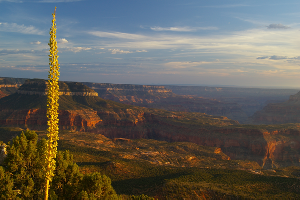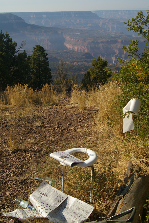“I wish I never answered the phone that morning,” growled Mike, a planning colleague as a group of us enjoyed dinner at the annual conference of the American Planning Association. We were talking of PITA (pain in the ass) zoning regulations we had to enforce. He continued with our rapt attention, “We have an ordinance requiring people to properly maintain their landscaping. That phone call started a nightmare for me ultimately involving the Smithsonian Institution and National Botanical Garden.” We were hooked.
My colleague and acoustic consultant, Jim Brennan, always told me “noise is unwanted sound.” Mike learned the hard way that “weeds are unwanted flowers,” or in his case, “flowers are wanted weeds.” In planning, we all know that the vast majority of zoning complaints result from neighbor feuds. This call, Mike explained, was no exception; what’s worse, he grumbled, “I wasn’t even ‘up,’ it’s just that no one was available to take the call.” The complainant wanted the city to order the next-door neighbor to get rid of all the weeds in the front lawn, “it’s an eyesore to the neighborhood, and she won’t do anything about it. We’ve talked to her.” “We” was not further defined, just left as an implication several in the neighborhood had talked to the offending party.
Mike drove by the property with a camera that afternoon, and the complainant was right, the lawn was filled with weeds. Taking a picture, he sent the zoning violator a letter the next day ordering corrective action. The violation was logged and put in the tickler for later review and further action, if necessary. The morning after the letter would have reached the homeowner, Mike said his direct line was ringing right at 8:00.
“I do not have weeds in my front yard,” the woman’s voice slammed into his ear. “Jim Smith (fake name, obviously) complained, didn’t he?”
“Ma’am, when a violation is determined,” Mike explained in standard plannerese, “it’s between you and the city. Where we learned of it doesn’t matter.”
“Don’t I have a right to face my accuser?”
“Ma’am, the City is your ‘accuser’.”
“Whatever. There are no weeds in my front yard. I have nothing but wildflowers. My front lawn is ‘xeriscape’ natural landscaping to conserve water. Doesn’t the city want us to conserve water? It said so in the last water bill.”
“Ma’am, I was by your house the other day, the front lawn is filled with weeds.”
Indignantly she replied, “They are NOT weeds. I can prove it. You think they’re weeds because you don’t know anything about the native plants you expect everyone to plant, do you?”
Mike admitted to us that she was right, “We’re always demanding new landscaping include ‘native species’,” he looked at each of us in turn, “Right?” We all nodded. “Well, she had me there. I couldn’t identify half the plants on our native species list if I had to.” It turns out, he explained, that the plants had cycles in which they “went to seed,” and I viewed the property during this cycle. “I learned that she lets the dead plants stay in the ground until she harvests the seeds to add to the front yard. It’s all natural.”
He rambled on about the continuing complaints, his continuing efforts, and then one day he received a phone call from the “violator.” “Mike,” they were now on a first-name basis, “I have on the phone with me a botanist from the Smithsonian Institution’s National Botanical Garden in Washington, DC. She can fax you credentials if you need proof, or you can call her back at her number if you don’t believe me.” Mike said he stipulated acceptance.
The botanist came on and explained that she had reviewed the seed packets the “zoning violator” used on the front lawn, “I don’t understand the objective, Mike, these seeds are all from plants native to your area. None of them are classified as ‘noxious weeds’ or ‘invasive species.’ In fact, based on the photos of the neighborhood I reviewed, her house is the only one with native plants. Everyone else with lawns, shrubs, and trees are universally planted with non-native species.”
The moral we decided was not to enact any code we didn’t fully understand the implications…and definitely to remove the word “encourage” from the spell check dictionaries so it never showed its ugly face in a plan or ordinance every again.
 “Camping!” always ends with an exclamation mark when my camping group, the “Gang of Three,” plans a weekend under the desert sky. Once a month Steve, Kelli, and I, plus occasional friends, gather our gear, pack our vehicles and head out from Phoenix—to the desert in the winter in the mountains in the summer. Riding shotgun in mine is my six year old chocolate lab, Hershey, the official Gang of Three camping dog. Like most chocolate labs, once out of puppyhood there is mellowness to her demeanor.
“Camping!” always ends with an exclamation mark when my camping group, the “Gang of Three,” plans a weekend under the desert sky. Once a month Steve, Kelli, and I, plus occasional friends, gather our gear, pack our vehicles and head out from Phoenix—to the desert in the winter in the mountains in the summer. Riding shotgun in mine is my six year old chocolate lab, Hershey, the official Gang of Three camping dog. Like most chocolate labs, once out of puppyhood there is mellowness to her demeanor.



You must be logged in to post a comment.